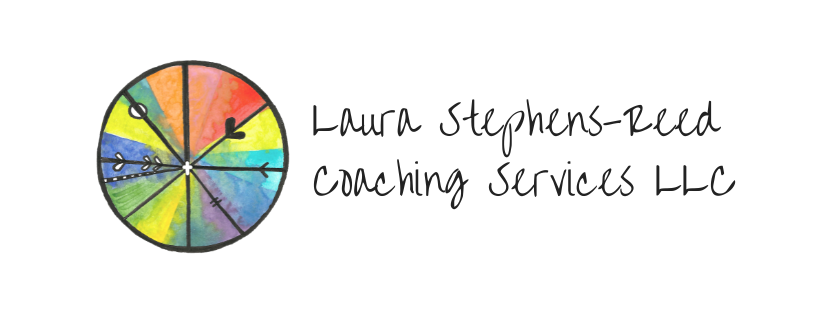When I entered seminary in the fall of 1999, I was there to train for ministry. I was not on the lookout for a spouse. And yet, in my final year, I found myself falling in love with a United Methodist pastor from Alabama. When Matt was commissioned for service in his conference, we were not yet engaged. Three years later, though, we were newlyweds when Matt underwent his interviews for ordination.
I attended the interview retreat as moral support. I was shocked to be called into Matt’s actual interview with the Board of Ordained Ministry. The Board asked us what we would do about baptism when we had children, since I was ordained to ministry in a believer’s baptism tradition and the United Methodists practice infant baptism. “Well, if we have children [red flag #1 for the Board], we’ll have that conversation then [red flag #2].” Luckily, in spite of my obstinance/honesty, Matt was approved for ordination. But the summons to his interview, much less the question posed to me, was an early signal to me that life as a clergy spouse came with some land mines.
A few months ago Matt stepped away from pastoring a congregation, at least for a season. As we planned for a year and a half for his leave, which was prompted by the challenges of Covid, 20 years of ministry without a break of more than a week at a time, and other factors, I could not wait to throw off the weight of all the projections that come with being the minister’s wife. Some people relish the role of being married to a pastor. I do not, though I delight both in being clergy myself and being a spouse to Matt.
Since I now feel like I have space to talk more freely, I thought I’d share a bit about my experience. I don’t speak for all clergy spouses, though I expect many could relate with the struggles of being:
Silenced. Ministry is one of the few jobs in which the pastors might (though this should never be assumed) bring their families to work. That makes the stakes higher for everyone in the pastor’s family. If the pastor runs afoul of the congregation, the pastor’s family loses a faith community. If the pastor’s spouse and/or kids “act out,” that causes trouble for the pastor. For me this has resulted in the need (felt, if not actual) to keep my cards close to the vest.
Hurt. People sometimes feel like the pastor and family are fair game for any kind of criticism. I’m not talking about the constructive kind, which is good and necessary for a minister to grow. And it is a special kind of pain to watch an embattled pastor navigate conflict, knowing that you as the spouse can’t do anything to make things better.
Weighed down with expectations. I don’t think many churches (that Matt would serve, anyway) still hand the curriculum for the children’s Sunday School class over to the pastor’s wife on the first day. Other stated and unstated suppositions still lurk, though. Some are benign, like that I would bring a dish to a church potluck. (I am not the cook in our family, and no one needs to take a chance eating what I would make.) Some are more insidious, such as that my work should always be eclipsed by Matt’s.
Vocationally hemmed-in. Being married to an itinerant minister who serves at the pleasure of the bishop has meant we’ve gone where Matt is appointed, and then I adjust vocationally. (Other clergy families, even United Methodist ones, navigate this differently, and I celebrate that!) This has resulted in two narratives that are both true: 1) that Matt’s job security has given me the freedom to develop my ecumenical interim work and coaching practice (which is the story I lean into on my better days) and 2) that I have had to create a portable ministry so that I don’t have to struggle afresh to find my vocational footing every 3-4 years.
Lonely. Pastors have to set boundaries with parishioners for their own ethical integrity. Clergy spouses often end up doing the same to protect their clergy spouses and/or themselves for reasons related to many of the challenges named above.
I give this window into clergy spouse-dom because it doesn’t have to be so hard. Churches can support pastors and their families, and when this happens, everyone wins. Pastor, spouse (and kids, if applicable), and congregation are all energized by love and trust, and a longer and more fruitful mutual ministry together becomes possible. Specifically, here is what churches can do:
Treat your pastors fairly. This is basic stuff that goes for all pastors, whether or not they are partnered or have kids. Respect their time, come alongside them, pay them a just wage, tell them you appreciate them every once in a while, bless their need for breaks, and give them useful feedback. This allows these pastors to be fully human and more present to their loved ones.
Remember that spouses are our own people. When we speak, we speak for ourselves. Clergy shouldn’t have to deal with blowback because church members are clutching their pearls at something the spouse said or did.
Respect the clergy spouse’s needs. Our lives do not have to revolve around a congregation we do not lead. We want to work. We want to have friends who don’t know us as Pastor’s Spouse. We want to feel free to go to church somewhere else sometimes or always. We might even want to sleep in on the occasional Sunday morning.
Don’t expect more of clergy spouses than you would of anyone else. If you think spouses should do more, there should be a formal position with pay involved. If you think spouses should be better, remember that we are human.
See and value clergy spouses. We have our own gifts and callings that we want to exercise to their fullest.
Support and encourage our desire to expand our connections. Our desire to make friends outside the church is not a criticism or rejection of those in the church. We just need to jump out of the fishbowl sometimes.
Offer help with clergy kids, without judgment. Whatever you think about the pastor or spouse, please love our children, even and especially when they are acting out. (It is stressful to bring your child to your own or your spouse’s workplace!) Show interest in them. Engage them in conversation. Invite them to sit with you. Support the need for their care during meetings and classes.
Someone who is currently a clergy spouse can’t say all these things I’ve shared with you. It’s too touchy. But since I now can, I hope my experience sheds some light on what it’s like to be a clergy spouse and how your church can more fully support clergy families.
Photo by Janno Reyes on Unsplash.






















